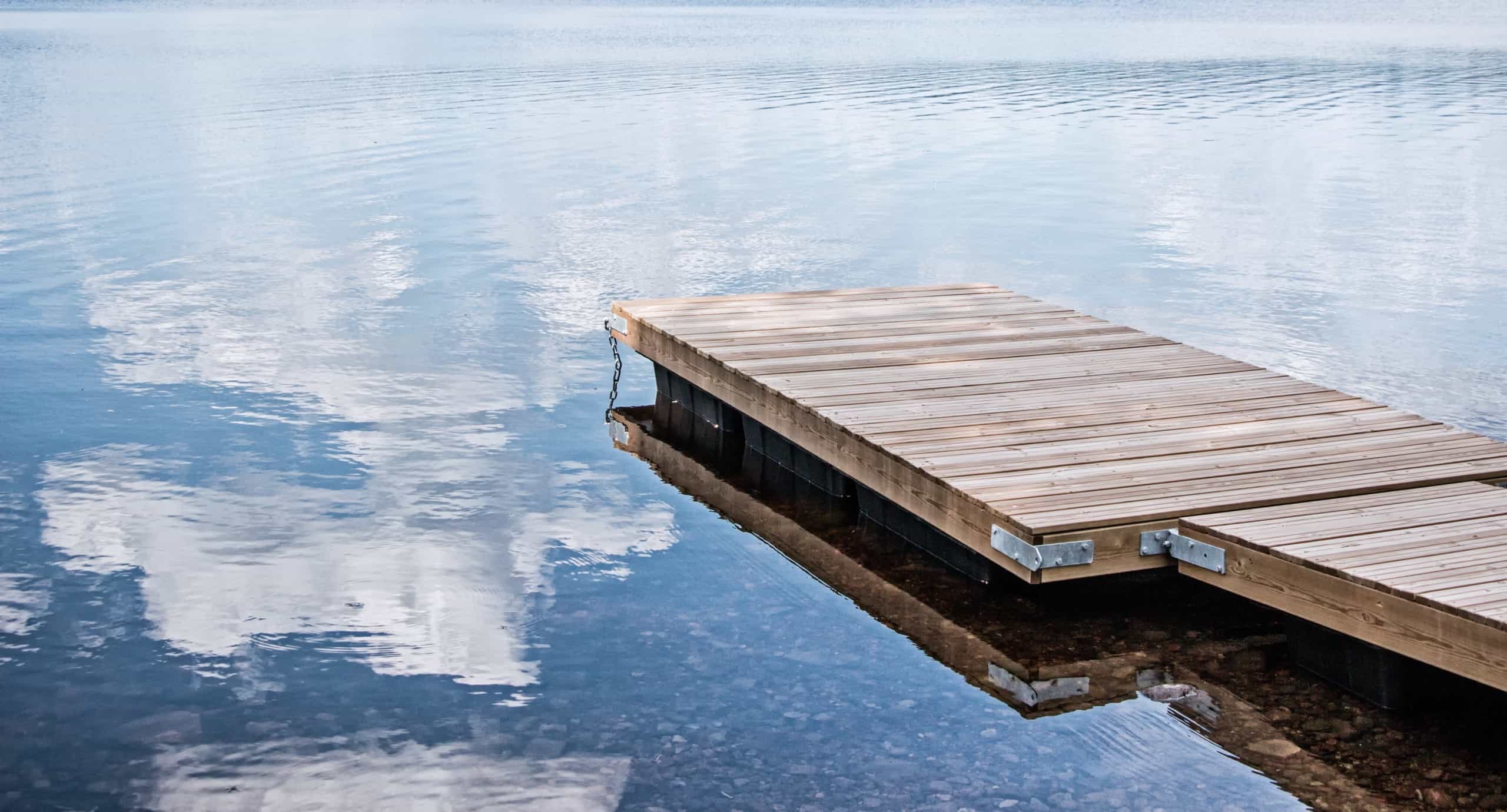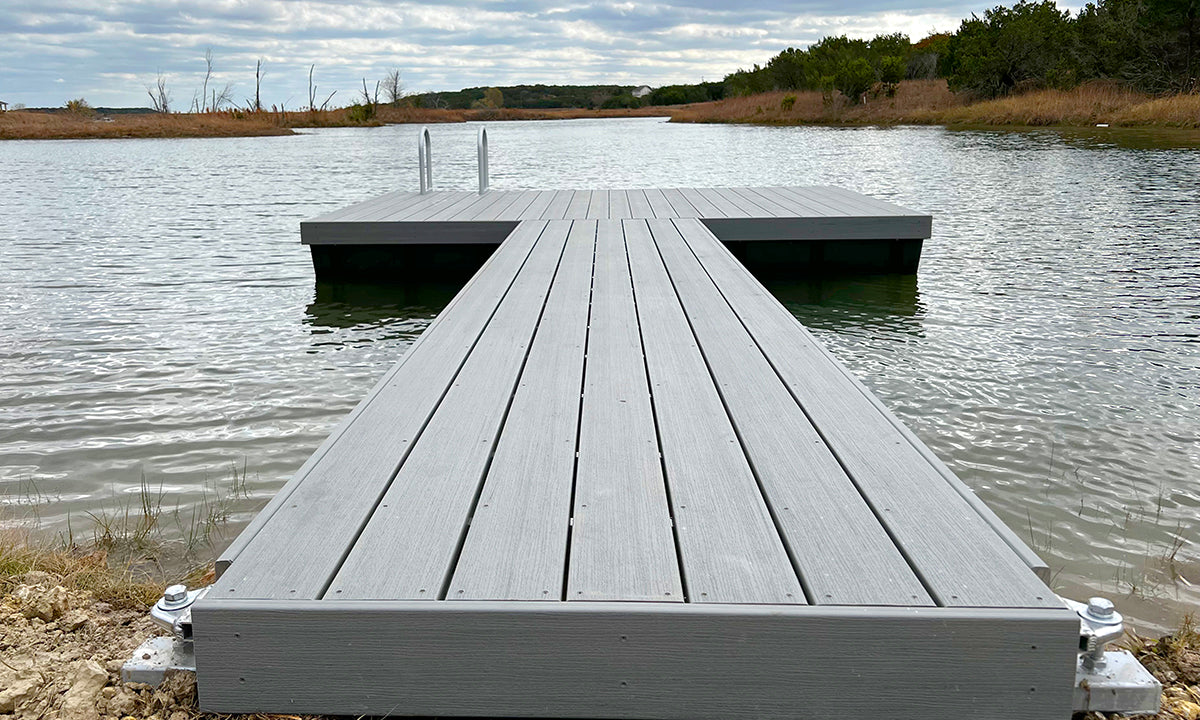Develop the Perfect Docking Option With Floating Docks
Floating docks present a versatile service for a range of maritime requirements, adapting effortlessly to changing water degrees and diverse vessel types. Their modular nature enables for rapid installation and relocation, yet the choice of suitable products and layout features is vital for making certain both performance and visual allure. As we discover the crucial elements that add to the efficiency of floating docks, several vital variables pertaining to security and maintenance will emerge, questioning regarding exactly how to enhance your docking experience. The subsequent discussion will certainly brighten these essential factors to consider.

Benefits of Floating Docks
Floating docks deal many benefits that make them a perfect option for different maritime applications. One of the main benefits is their adaptability to changing water levels. Unlike fixed docks, floating docks fluctuate with the trend, making sure regular access for vessels. This attribute is especially crucial in locations vulnerable to considerable tidal changes or seasonal water level changes.
Additionally, floating docks are normally much easier and quicker to set up compared to typical set structures. Their modular layout enables straightforward assembly and disassembly, promoting maintenance and relocation when essential. This versatility is especially valuable for momentary applications or in atmospheres where problems might change.
Floating docks likewise tend to be a lot more eco-friendly, as they reduce disruption to the seabed and bordering aquatic ecological communities. Their buoyant nature reduces the threat of damage to aquatic life, promoting a much healthier setting. These docks can be personalized to accommodate different vessel sizes, making certain that they fulfill certain functional requirements.
Eventually, the mix of versatility, ease of installment, and ecological considerations makes floating docks an extremely reliable service for a large range of maritime demands.
Selecting the Right Products
Picking the appropriate materials for floating docks is crucial to make sure resilience, security, and long life. The selection of products straight influences the dock's efficiency in numerous ecological problems, including exposure to water, sunlight, and potential wear from marine traffic.
Typical materials used for floating docks consist of light weight aluminum, wood, and high-density polyethylene (HDPE) Aluminum is lightweight, corrosion-resistant, and requires marginal upkeep, making it an excellent selection for long life. Its first expense can be higher contrasted to various other products.
Wood, while aesthetically appealing and providing a traditional appearance, can be at risk to rot and bug damage if not properly dealt with. Consequently, making use of pressure-treated wood or naturally durable varieties like cedar or redwood can alleviate these problems.
HDPE is a preferred option because of its resistance to UV rays and chemicals, in addition to being eco-friendly. floating dock services. It is offered and lightweight in different shades, enabling customization
Eventually, the best product choice will certainly depend on certain requirements, consisting of budget plan, desired aesthetic appeals, and environmental considerations. Mindful analysis of these variables will certainly lead to a successful and resilient floating dock remedy.
Layout Considerations for Security
When designing floating docks, making certain security is a fundamental aspect that can substantially influence their capability and safety and security. Security in floating dock design is influenced by various elements, including buoyancy, weight distribution, and the arrangement of components.
Weight circulation is critical; equally dispersing loads throughout the dock protects against tilting and enhances security. Broader designs can offer raised security, especially in harsh water problems, while longer docks might need additional supports to avoid sagging.
Another crucial consideration is the ecological effect, including wave activity and wind. Integrating functions such as sidewalls or skirting can aid minimize the impacts of environmental pressures, preserving security in damaging conditions. Ultimately, a mix of thoughtful design, product selection, and understanding of ecological elements will certainly produce a drifting dock that fulfills both security and safety and security needs.
Installment Tips and Techniques

Next, secure the required permits and follow regional policies, which may dictate installation methods and ecological factors to consider. Involve a certified professional experienced in floating dock installations if called for. Use top quality materials made for aquatic atmospheres to improve sturdiness and longevity.
When placing the dock, straighten it parallel to the shoreline to help with simple access. Guarantee that the anchoring system is robust, employing cinder block or helical supports to stabilize the dock versus wind and wave activity. It's vital to make up seasonal water degree fluctuations, consisting of potential ice activity in chillier environments.
Throughout the installation, verify the dock's floatation and security before wrapping up the anchoring. Regularly check the installation for any kind of indications of wear or damages. By complying with these tips and methods, you can attain a protected, useful, and visually pleasing floating dock installation that satisfies your needs.
Upkeep and Care Guidelines
Caring and preserving for floating docks is crucial to extending their life-span and ensuring safe usage. Routine examinations should additional hints be conducted to determine any type of indications of wear, damages, or aquatic development. Look for cracks, loose fittings, or stained areas on the dock's surface area, as these concerns can compromise structural integrity.
Cleaning up is vital. Utilize a stress washing machine to eliminate algae, barnacles, and particles, which can collect with time. For stubborn development, think about eco-friendly cleaner that won't damage marine life.
In addition, examine the mooring lines and supports regularly to guarantee they are safe and complimentary from rust. Replace any torn or harmed lines without delay to keep security.
Throughout severe weather condition, such as tornados or freezing problems, take preventive steps. Secure the dock with extra mooring lines and, if practical, eliminate any detachable parts to protect against damages.
Final Thought
In conclusion, the implementation of floating docks offers a functional and reliable docking solution appropriate for numerous maritime applications. With proper setup and normal maintenance, floating docks can give efficient and trusted docking experiences for a broad variety of vessels.
As we discover the necessary aspects that contribute to the efficiency of floating docks, several crucial variables imp source concerning stability and upkeep will emerge, increasing concerns concerning just how to optimize your docking experience. Unlike repaired docks, floating docks rise and autumn with the trend, making certain consistent availability for vessels.When making floating docks, guaranteeing security is a fundamental element that can dramatically affect their functionality and safety. Stability in floating dock design is affected by numerous factors, including buoyancy, weight circulation, look at this now and the arrangement of parts. Inevitably, a mix of thoughtful layout, material option, and understanding of environmental elements will produce a drifting dock that fulfills both security and security demands.